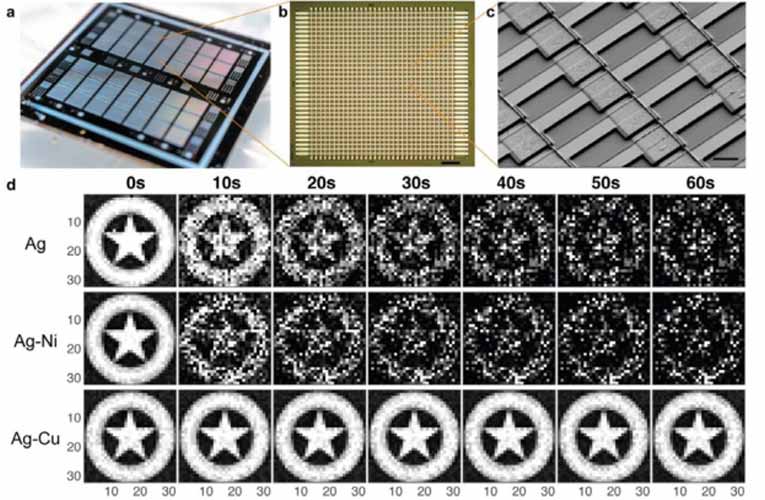
Putting tens of thousands of tiny memristors (memory transistors), the team of Engineers at MIT has come up with a chip named ‘brain-on-a-chip’. The silicon-based components that mimic the human brain's information are put onto a single chip. Proving to be a stepping stone, the chip when run through various tasks has the ability to "remember" and reproduce stored images.
Researchers fabricated each memristor from alloys of silver and copper, along with silicon for designing the chip. The new memristor design is apt for neuromorphic devices i.e. the electronics that are based on a new type of circuit that processes information in a way that mimics the brain’s neural architecture. The brain-inspired circuits like these could be built into small, portable devices, and would carry out complex computational tasks performed by supercomputers.
The memory transistors require less chip real estate than conventional transistors allowing for more powerful, portable computing devices. On top of that, no Wi-Fi is needed. The problem with the existing memristor designs is that they have limited abilities. Overcoming this limitation, the team worked on metallurgy which is the science of melding metals into alloys and studying their combined properties. Rather than adding different atoms to strengthen the materials, the team came up with the idea of tweaking the atomic interactions in the memristor and adding some alloying elements to control the movement of ions in the medium. The copper that has the ability to bind with silver and silicon, acting as a sort of stabilizing bridge was chosen for the purpose.
The artificial synapses are being used to do real inference tests and the team is planning to develop this technology further to have larger-scale arrays to do image recognition tasks. In their first test, the team recreated a gray-scale image of Captain America's shield. Each pixel matched to a corresponding memristor on the chip and it was able to produce the same crisp image of the shield multiple times.
The latest innovation will help users in connecting a neuromorphic device to a camera on their car, and it can recognize lights and objects and make a decision immediately, that too without an internet connection. The team is anticipating to use energy-efficient memristors to do those tasks on-site, in real-time.

